Peony roses: varieties and subtleties of growing
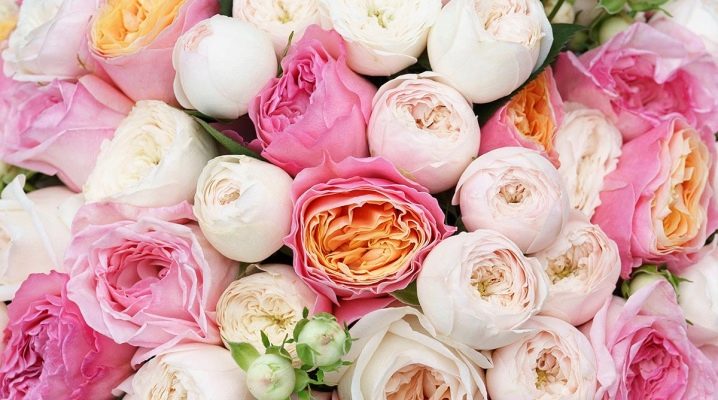
Peony roses fully live up to their name: lush, multi-petalled flowers, so reminiscent of the flower of the same name. Due to its amazing decorative properties, the plant is very popular with gardeners, even those who are cool enough to roses.

Description
Peony or English roses were created by the famous breeder David Austin. He was inspired by old roses at an exhibition in France and decided to diversify their color, as well as resistance to negative external factors. Then he carried out work on crossing the Gallic rose and floribunda, receiving beautiful flowers, similar to peonies. This was the first rose, which was named "peony". An interesting fact is that these flowers have not yet been assigned a separate branch in the classification, and so far they belong to scrubs, that is, to bush roses.
Why did these flowers become so popular all over the world?
- Resistant to temperature extremes.
- Immunity to many diseases and pests.
- Easy to care for.
- Variety of colors and shades.
- The dense crown of the bush. Twice flowering per season.
- A divine scent, especially when it rains.
- Large flowers, abundantly covering the bush.

Peony roses are distinguished by a huge number of petals. Dense terry emphasizes the chic of these plants. The beauty of these bushes is truly impressive. But they still have some drawbacks.
- From the abundant amount of flowers, branches literally bend to the ground. This requires extra care.
- The declared resistance to diseases is not always confirmed in practice.
- Long rains have a very negative effect on the condition of the bush.
- Some varieties do not bloom a second time.
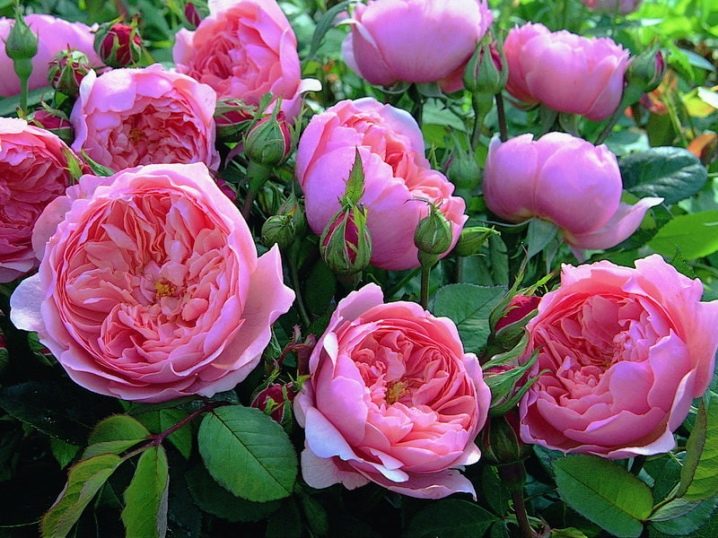
Types and varieties
There are about 200 varieties of this rose in the world, but it is impractical to use more than half of them for cultivation in Russia. The climatic conditions of our country are not soft and stable. Peony rose varieties are conventionally divided into four main types: pink, yellow, white and red. The creator of these species, David Austin, just sought the color variety of his brainchild. Each of the types of peony roses includes many varieties, but there are especially outstanding ones.
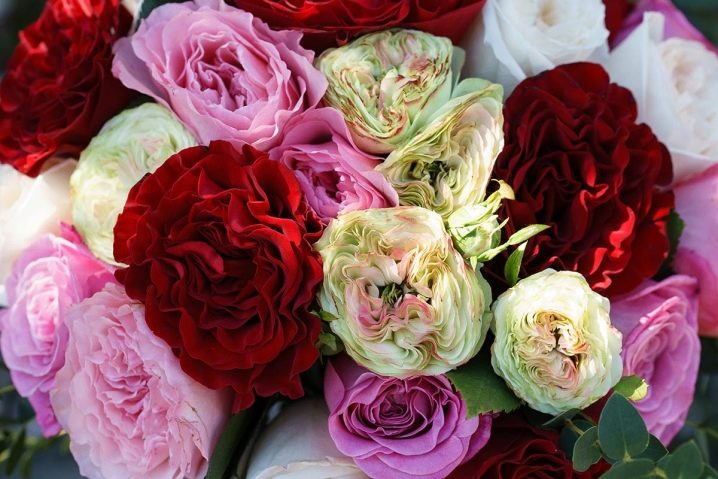
Pink peony roses
The most commonly used varieties are pink.
- Constance Price Is a peony climbing rose. It spreads up to 3 meters wide, and the shoots reach 6 meters. Has a pale pink color of flowers that never fully open.
- Eglantine - bush rose-scrub. It blooms almost continuously, but it often gets sick, which makes this variety inconvenient to use.
- Miranda - a rose with white outer and pink inner petals. The flowers are very large - up to 10-12 cm in diameter, but not fragrant.
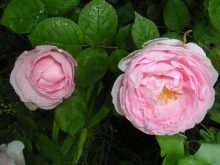
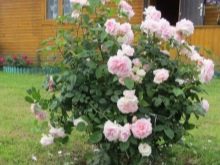

White peony roses
- Tranquility - a rose with yellowish-white petals making up a large flower about 12 cm in diameter. Flowers are collected in inflorescences. The variety blooms twice a season.
- Snow Goose - a huge bush up to 3 meters high. The flowers are small, but long-lasting: blooms for almost the entire season.
- Claire Austin - a small round bush with a diameter of about 1 meter.The round, yellowish flowers emit a mild, pleasant aroma and grow in threes on a single stem.
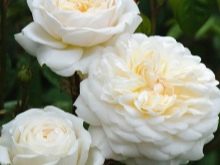
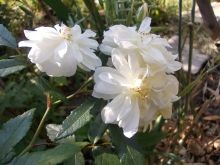

Yellow peony roses
- Golden Celebration - a long-flowering small bush up to 1.5 meters in diameter. Huge flowers reach 15 cm, and are also fragrant. The variety is practically not susceptible to diseases.
- Graham Thomas - blooms all summer long with bright large apricot flowers. A large shrub is a little sick.
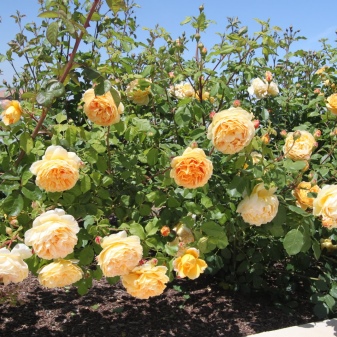
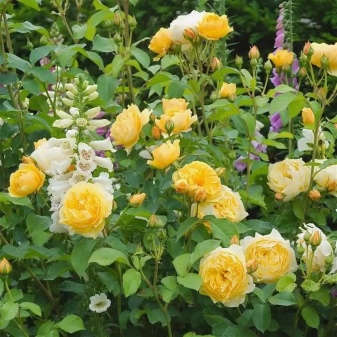
Red peony roses
- William Shakespeare - a very famous variety for its beauty. Scarlet flowers, double, are collected in inflorescences of 4 pieces.
- Benjamin Britten - the outer petals are larger than the inner ones, which makes the structure of the flower very interesting. Pleasant aroma and compact shrub attract many gardeners.
- Othello - demanding, but very beautiful variety with small raspberry roses.



Selection recommendations
Peony roses are quite versatile plants. They are even used to create hedges, not to mention single or group planting. No classic bridal bouquet can do without such a flower. For a small garden, small varieties can become the centerpiece of a flower bed or mixborder. Also, small peony roses are grown in pots, but transplanted into open ground for the winter.
For amateur flower growers, it is better not to get carried away with unusual varieties with a lot of nuances in care. Choosing in favor of the proven, classic types of peony rose will help you grow it without any problems and enjoy its beautiful appearance and aroma.
In order for the plant to feel at ease in any area, it is worth purchasing frost-resistant adapted varieties.



Landing
Peony roses look great with many plants, but they can also serve as a tapeworm due to the large size of the bush. The best place for planting such a rose is a lit place with a medium degree of ventilation. The soil should not be heavy. Peony roses also do not favor excess nitrogen. In order for such a plant to develop well, it is necessary to exclude the surface occurrence of groundwater at the proposed planting site.
The best time to plant is mid or late spring, when the soil has warmed up enough and frost is no longer expected. The landing itself is practically straightforward.
For better rooting, it is necessary to maintain the root system of the acquired planting material in a solution of growth stimulants.
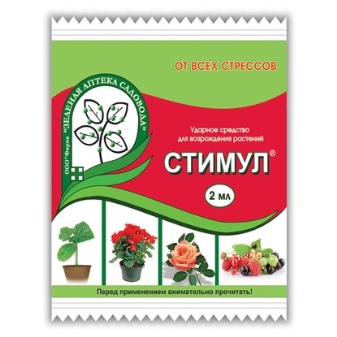
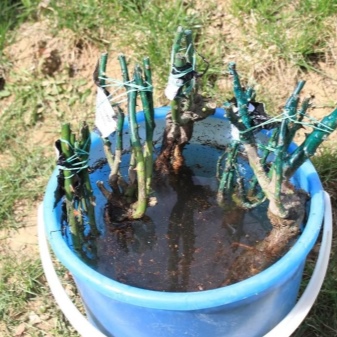
The seat must be prepared as follows.
- Dig a hole that will exceed the diameter of the root system of the prepared plant by about 10 centimeters. The depth of the pit should be about 50 cm. A large pit is preferable, because it is in it that the root system of the plant can be carefully positioned. If several bushes are planted at the same time, then the distance between the boundaries of the planting holes should not be less than half a meter.
- It is advisable to lay a drainage layer at the bottom of the prepared pit: expanded clay, broken brick, coarse sand.
- A layer of earth mixed with universal fertilizer is poured onto the drainage.
- The root system of the seedling is examined and the ends of the thickest roots are trimmed. For faster growth, you can soak the roots for a couple of hours in a solution of growth stimulants.
- A rose bush is placed vertically on the prepared place, the earth is gradually poured on top and slightly tamped.
- The planted peony rose is well watered with a bucket of water, the temperature of which should not be very different from the environment.
- From above, the soil around the bush is mulched to avoid premature drying out.



Care
Caring for peony rose bushes is not too difficult. It is important to remember its main components and not forget about them.
- Weeding and garter. The first procedure protects the plant from weeds, which not only interfere with full development, but can also provoke the appearance of pathogens.The garter helps maintain the integrity of the bush during the flowering period, which makes the branches heavier.
- Watering. Peony roses do not require special watering conditions. This procedure is performed as needed, increasing the frequency in dry months. It is important not to overdo it with water, as these plants tend to rot.
- Top dressing. In the first year after planting, fertilizers should not be applied, since they have already been applied to the planting pit. But next year, be sure to lay additional fertilizing every month of the growing season. For this purpose, organics are excellent: cow or horse manure, chicken manure, compost and wood ash. But specialized fertilizers for roses should not be written off either. At the beginning of spring, you should pay attention to nitrogen fertilizers for a better set of green mass, and before flowering, it is better to use phosphorus and potassium, as well as a spray of boric acid, which stimulates the ovary of buds. Before the fall, feeding is stopped so that the roots grow in mass, and the aerial part stops growing.



- Pruning. It is very important to remove the buds that are set in the first year of plant development. Flowering strongly depletes an already weak plant until its death. Allow the peony rose to bloom fully only next year. Shoot pruning of this rose is carried out twice: in spring and autumn. In spring, pruning is of a sanitary nature: the crown is thinned so that the plant breathes and the likelihood of fungal infections decreases. In autumn, damaged and weakened shoots are removed. The tool must be disinfected before trimming. The shoots of this year are cut by a third, and the growth below the graft is completely removed.
- Shelter for the winter. Despite the resistance of peony roses to cold weather, it is better to protect the bushes and cover them for the winter. This procedure is carried out in a period of temperatures from 0 ° to - 5 ° C. If you close the rose earlier, condensation of water vapor and, accordingly, mold and rot may form under the shelter. A "house" for a plant can be built independently, in the form of crossed arcs made of metal or plastic. From above, the arcs are covered with a special canvas. There are also special reusable covers for roses and other plants on sale. You can use them, but they are much more expensive. Small bushes can be covered with spruce branches or sawdust.
- Disease prevention. Despite the resistance of the peony rose to many diseases, its frequent problems are powdery mildew, black spot and rot. It is better to prevent these problems by using a suitable drug in prophylactic doses during the entire growing season about three times. Bordeaux liquid, "Bactofit", "Fitosporin" and colloidal sulfur are perfect.



Breeding
There are many ways to plant David Austin roses. The main and simplest ones that even an amateur can use are cuttings, propagation by layering, seeds and budding.
Cuttings
The procedure is performed in August. For this method, you will need this year's shoot, which has 3 leaves. A cutting is planted in a prepared and watered bed so that there is one leaf on the surface, and it is covered with half a plastic bottle with a twisted neck. If there are several cuttings, then they are seated at a distance of 20 centimeters from each other. When winter comes, they must be covered with snow. The next year, they must give their leaves, the rooted cuttings can be planted in further growing places or left for another year in the same garden.
Cuttings of a peony rose can also be grown in winter. To do this, the prepared cuttings are wrapped in wet newspaper and wait until callus forms at the end of the shoots, and the buds begin to bloom. After that, the cuttings that have started to grow are planted in a pot with soil and covered with a glass jar.In the spring, they are transplanted into open ground, avoiding both too sunny and too dark places in the garden.
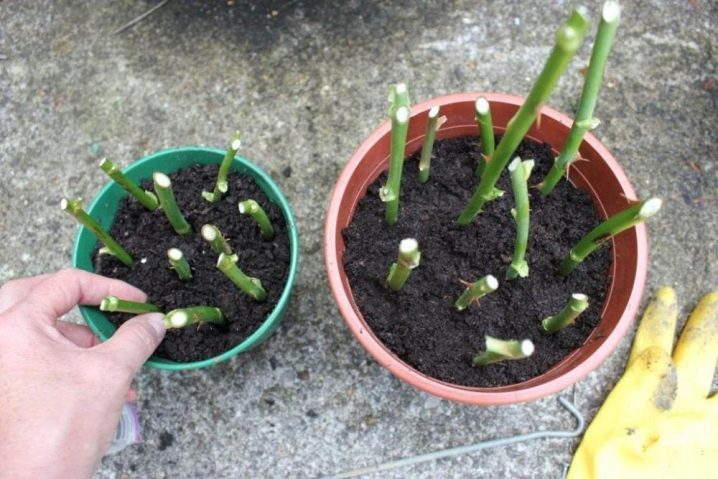
Reproduction by layering
For strong and elongated branches of a peony rose, this method is perfect. To reproduce by layering, you need to choose shoots for rooting in the second half of summer. The breeding area is prepared in advance: they clear the soil, dig it up and fertilize it. At the site of the proposed rooting (approximately in the middle of the shoot), an incision is made on the lower side, into which a match is inserted. This part of the shoot is fixed with a bracket, buried in earth, compacted and watered. And the rest is tied to a vertical peg. Next spring, you can already separate the bush from the mother plant and transplant it.
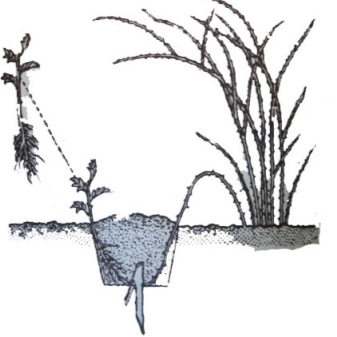
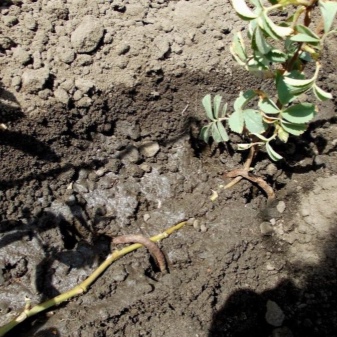
Seeds
In theory, this method exists, but in practice it is never applied. Inheritance of traits in roses, especially grafted ones, does not occur. It is impossible to predict what exactly will turn out when growing seeds.
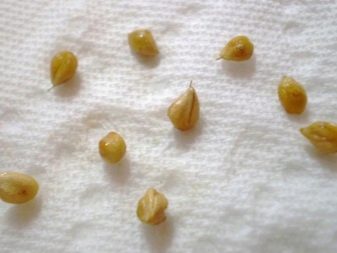
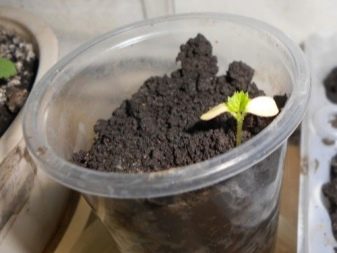
Budding
This breeding method is quite difficult to perform: accuracy and accuracy are required. A T-shaped cut is made on the shoot of the rose, which will be used as a stock. A scion is introduced into it, which will receive power from the finished root system.
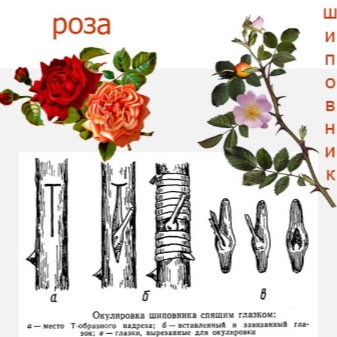
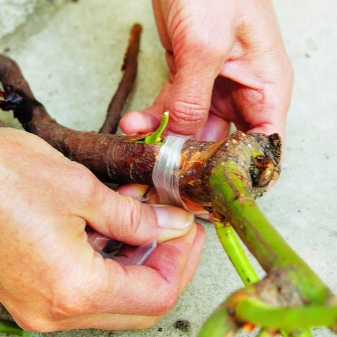
Examples in landscape design
To decorate personal plots, parks and home gardens, peony roses are used very often. Peony roses look especially beautiful against the background of green conifers.
- Insanely beautiful hedge of pale pink peony roses attracts attention. Such decoration of parks or old palaces shows the good taste of the landscape designer. The magnificence of such a hedge will remain after flowering, the greenery will delight the eye.
- Live gazebo Is a great way to shade your garden space and create an extra seating area. Climbing peony roses are great for this purpose. And their beauty and aroma will make the gazebo truly fabulous.
- Rustic flower bed with continuous flowering with an accent in the form of a peony rose with small flowers. Simple and tasteful. Such a decoration is suitable for a summer residence or a suburban area.
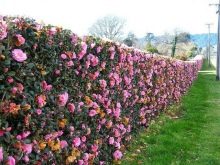


- Traveling single composition from a peony rose of apricot color. It is easy to move such a flowerpot anywhere in the garden.
- Laconic boxwood and beautiful peony rose. The combination of clear boxwood curb shapes and free lines of a rose bush is an idea for successful landscaping.
- A group of peony roses of the same color in the center of the patio. A bright accent against the background of laconic tiles looks amazing and echoes the color of the facing brick, which makes such a composition even more organic.
- Wooden fence and a climbing rose - a pleasant and cozy combination. After flowering, the greenery will also highlight the tree well. You can use this idea for both fences and wooden arbors.
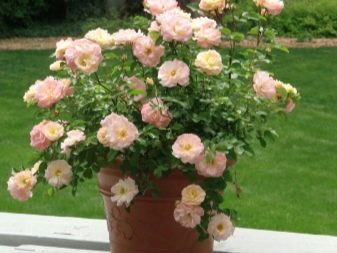
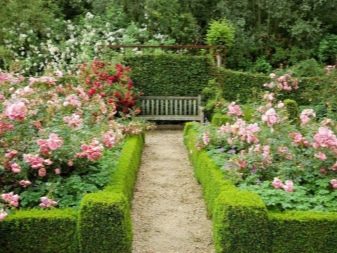


- Standard peony roses framing the path, emphasize the English style of the garden. Red flowers and white pebbles create an amazing contrast.
- Mixborder - this is exactly the flower garden where the peony rose can show itself in all its glory. The combination with conifers makes such a flower garden even more advantageous.
- Arch of peony roses - a good solution in every sense. The romantic look of such an element of landscape design will add zest to any site.



You will learn even more about peony roses by watching the video below.

































































































The comment was sent successfully.